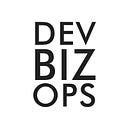IT Architects Hit Business Roadblocks
People often ask me how I choose the companies I work with. I often reply “the bigger, the better”! Joking aside, I enjoy working with companies that have lots of complexity, that are open to innovative ideas, and that I admire personally as a customer.
For example, Cathay Pacific is my favorite airlines, so I thought they would be a good partner for Stack Overflow. Little did I know that the business fired the entire IT leadership. Egads! While there are stories about what transpired and why, it’s clear that the level of distrust that developed between the business and IT reached a boiling point.
I made an off-hand remark in a previous post about architects and business units not seeing eye to eye. While this is not always true, it is something I have observed enough times that I come to expect quips about “the ivory tower of gearheads” when speaking with business leaders. The most caustic and intense organizational battles often occur between architects and business.
The other week at the YOW! Conference Hong Kong, I heard a talk by Gregor Hohpe on the role of the Enterprise Architecture. Two specific slides Gregor shared help explain why IT architects and strategy often create battles.
IT can have any number of reporting lines into the C-suite leadership. Where IT reports into leadership from an organizational perspective speaks volumes about how IT is perceived as a partner to the business. Understanding the reporting lines can shed light into the level of flexibility and empowerment held by the office of the CIO to effect change.
Historically, the CIO reported into the CFO. This is a legacy of previous decades where shareholder value was the most valued business metric. This means cost guides most business decisions. The business wants to optimize cash flow and drive cost out of the organization. This is what led to much of the outsourcing trend in the 90’s and 2000’s.
As the CIO role aligns closer to the COO and CDO, the role of IT shifts to a partnership model. Technology is valued as a core function in building value with the business. More investment is directed to IT, yet IT strategy is still dictated by the broader business strategy.
As technology becomes more critical to market differentiation and viability, leading edge organizations are starting to realize that IT is the business. Innovation and change is what is most valued from a business perspective and speed becomes ingrained in how business executes across every function, thus requiring IT to be in the driver’s seat.
Understanding IT reporting structures helps provide perspective on how IT fits into various business execution models. Some businesses are very loosely aligned, like multinational conglomerates that are often the result of many mergers and need more IT flexibility. At the other end of the spectrum, there are highly integrated companies where IT standards and processes are tightly coordinated, especially in industries like transportation.
For example, when unification is the model, implementing an ERP system takes different paths. When IT is a cost function, the ERP system is used to embed the current state business processes and is often outsourced. When IT is a partner to the business, ERP is seen as an opportunity to enable change and which IT and business manage jointly.
As an IT leader, it is critical to know the “business architecture” before setting the IT strategy. Creating a strategy based on innovation and architecture standardization in a cost-cutting, highly independent organization is a recipe for conflict. This is how most digital transformations die and why entire IT executive teams can be summarily dismissed.
Once there is an understanding of organization structure and business model, the issues of organizational distrust can be bridged. This requires business and IT adopting a common language and supporting greater transparency. Underlying this are better communication channels, which is why I often stress the need to adopt a “default open” culture before true business and IT alignment can occur. This, more than anything, is the recipe for successful digital transformation.
Do you feel IT and the business are well-aligned in your organization? What do you see are the opportunities and challenges in uniting IT and business?
Why does a billiards ball stop when it hits another billiards ball head on?
Loving Physics Stack Exchange, and realizing I spend way too long there…
We help IT leaders in enterprises solve the cultural challenges involved in digital transformation and move towards a community based culture that delivers innovation and customer value faster. Learn more about our work here.
